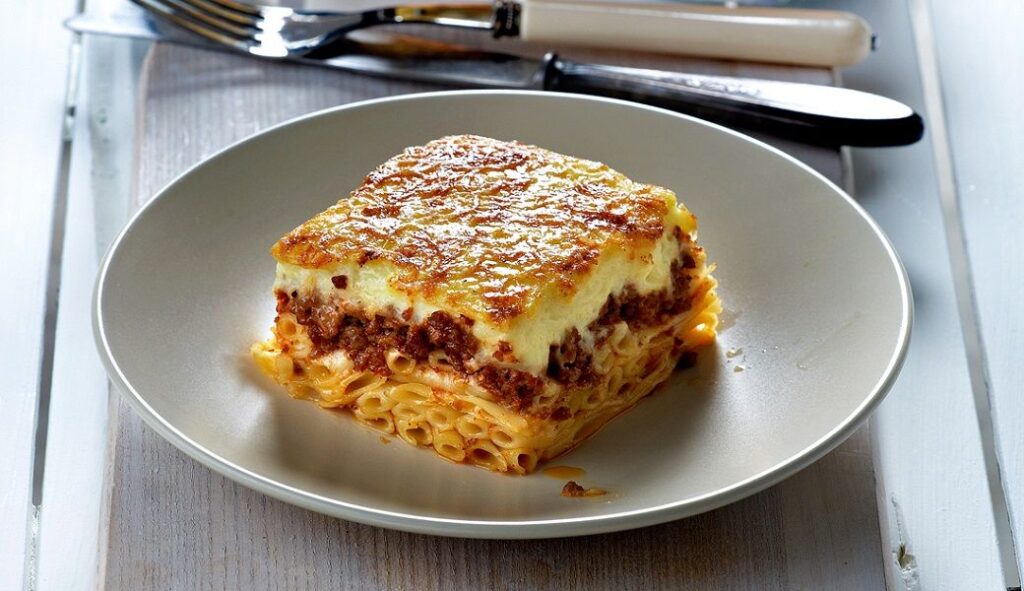The regular Viber quiz asked Greeks perhaps one of the biggest dilemmas: pastitsio or moussaka?
We expected a bigger battle, but moussaka won by a fairly large percentage. More specifically, it collected 65% while the pastitsio was left behind with a percentage of only 35%.
Pastitsio

Traditional Greek pastitsio (παστίτσιο, pastítsio) is an authentic Greek Lasagne – a baked dish that combines layers of pasta, ground meat and velvety béchamel sauce to create the ultimate comfort food.
Nikolaos Tselementes, a French-trained Greek chef of the early 20th century, invented the most recent and most popular contemporary variant of pastitsio.
Before him, pastitsio in Greece had a filling of pasta, liver, meat, eggs, and cheese, did not include béchamel, and it was wrapped in filo, similar to the most Italian pasticcio recipes, which were wrapped in pastry.
Tselementes' version—which is now ubiquitous—has a bottom layer that is bucatini or other tubular pasta, with cheese or egg as a binder; a middle layer of ground beef (or a mix of ground beef and ground pork) with tomato sauce, cinnamon and cloves.
The top layer is a béchamel or a mornay sauce, with other spices like nutmeg or allspice added. Grated goat cheese is often sprinkled on top. Pastitsio is a common dish, and is often served as a main course, with a salad.
Moussaka

Moussaka is an eggplant- or potato-based dish, often including ground meat, which is common in the Balkans and the Middle East, with many local and regional variations.
The modern Greek variant was created in the 1920s by Nikolaos Tselementes. Many versions have a top layer made of milk-based sauce thickened with egg (custard) or flour (béchamel sauce).
In Greece, the dish is layered and typically served hot. Tselementes also proposed a vegan variant for orthodox fast days.
READ MORE: 5 mistakes when making béchamel for moussaka and pastitsio.


